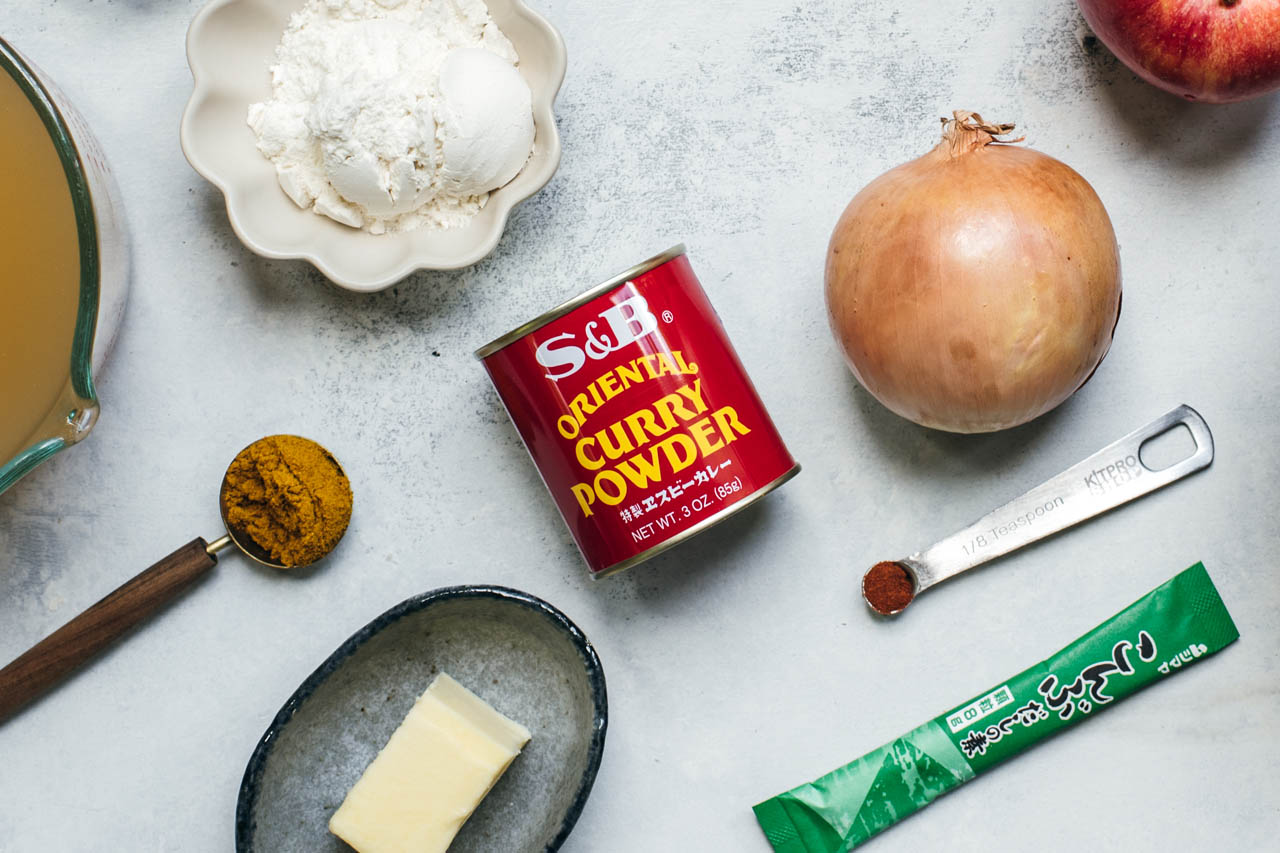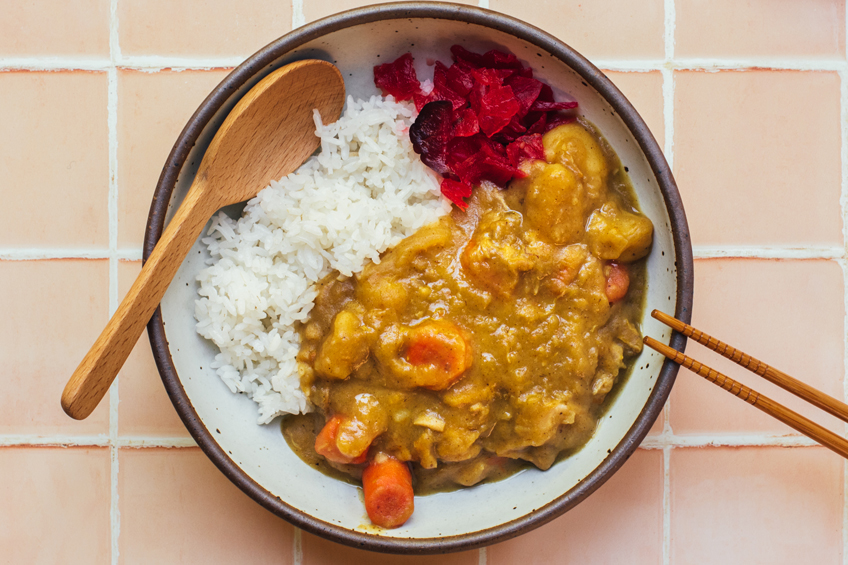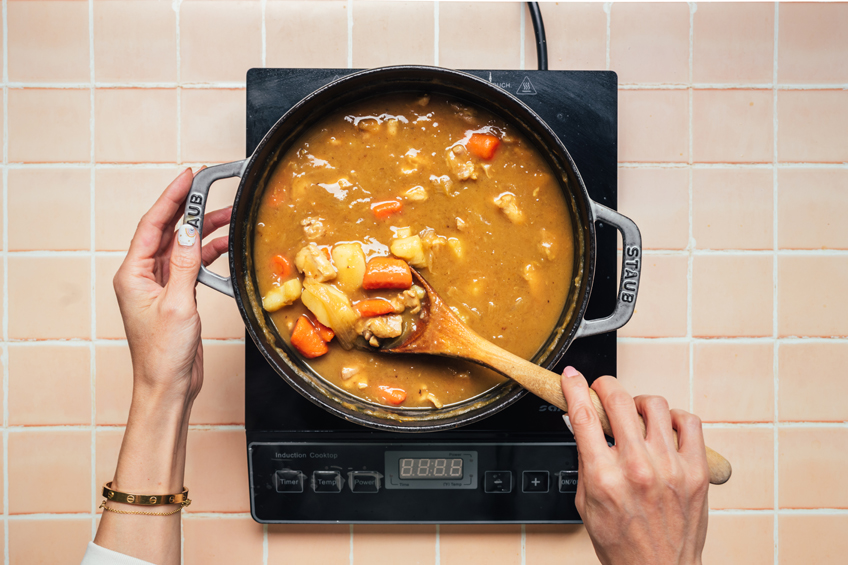
Amidst the vibrant panoply of colour and spices that perfume curry related dishes around the world, it’s possible for the relatively innocuous mild yellow sweetness of Japanese curry (or kare) to get lost in the swirl. Although it may lack bold heat or the vibrant hue of other types, Japanese curry is nonetheless a comfort food favourite, served in over 10,000 restaurants, and consumed by the average person roughly once every five days in Japan, according to statistics from the All Japan Curry Manufacturer’s Association. Served as kare raisu, or curry rice, this warming dish is enjoyed by the Japanese navy and schoolchildren alike, and is an easy addition to your own menu in the blisteringly cold days of winter.
Related: The Best Ways to Shop, Prepare and Cook Chinese Greens

Get Sonia Wong’s recipe: Japanese Chicken Curry
A bit of history
Japanese curry powder, like any curry powder, is a bit of an artificial construct with a history in British colonialism. The idea of a curry powder as a standardized blend of ready-made spices was created by British expats who brought these concepts back to England with them when they returned from sojourns overseas in India during the 18th century, and exists in the West in a way that it doesn’t elsewhere. This curry powder was further transformed by British influence in Japan, with westernized foods (or “yoshoku”) taking root in the 19th century Meiji period.
Shopping for Japanese curry
Japanese curry is sold in a variety of forms, the most common of which are the dry spice blends and a thicker roux paste. The latter comes in bricks that resemble chocolate bars, and are combined with flour to create a shelf-stable and meltable product for convenience.
Japanese curry powder, on the other hand, is sold in small red metal tins by manufacturers such as S&B, although recipes abound to reverse engineer a DIY version. Although Japanese curry powder has a fairly long shelf life if stored in a cool and dark place, the fragrance and flavour will wane over time.
Flavour profile
Although spicier versions exist, the commonly encountered versions of Japanese curry powder are relatively mild, with turmeric and coriander forward notes and a residual sweetness (S&B’s version purportedly contains 30 spices). A hearty amount of fenugreek adds sweet elements, and the inclusion of cumin combined with the turmeric adds the colour and aroma often associated with the popular idea of curry.
Related: A Guide to Chinese Noodles

Sonia Wong
Cooking with Japanese curry powder
Although there’s no denying the convenience of a melt and eat curry roux, using the powdered form isn’t much more difficult. Using the same technique as you’d use for a white sauce/béchamel for the base of a lasagna or a gumbo, you can easily build a roux by sautéing all purpose flour in butter (be careful to take your time, both to cook out the raw taste of the flour and also to allow you to stir carefully to avoid the roux sticking and burning) and then add the curry powder.
How to use Japanese curry powder
Although the most common use of Japanese curry powder is to make a deliciously warming curry rice, the same sauce can also be used to stuff bread for a fulsome snack (kare pan), or to top noodles (kare udon). You can use it to complement and tame the sweetness of butternut squash or pumpkin soups, or add a warming undertone to roasted vegetables such as cauliflower. Sprinkled onto fried rice, mashed into chickpeas or blended into an egg salad sando, Japanese curry powder adds a certain mysterious element that elevates each dish, and is well worth adding to your spice rack.
Read more: A Guide to Dried Black Mushrooms
